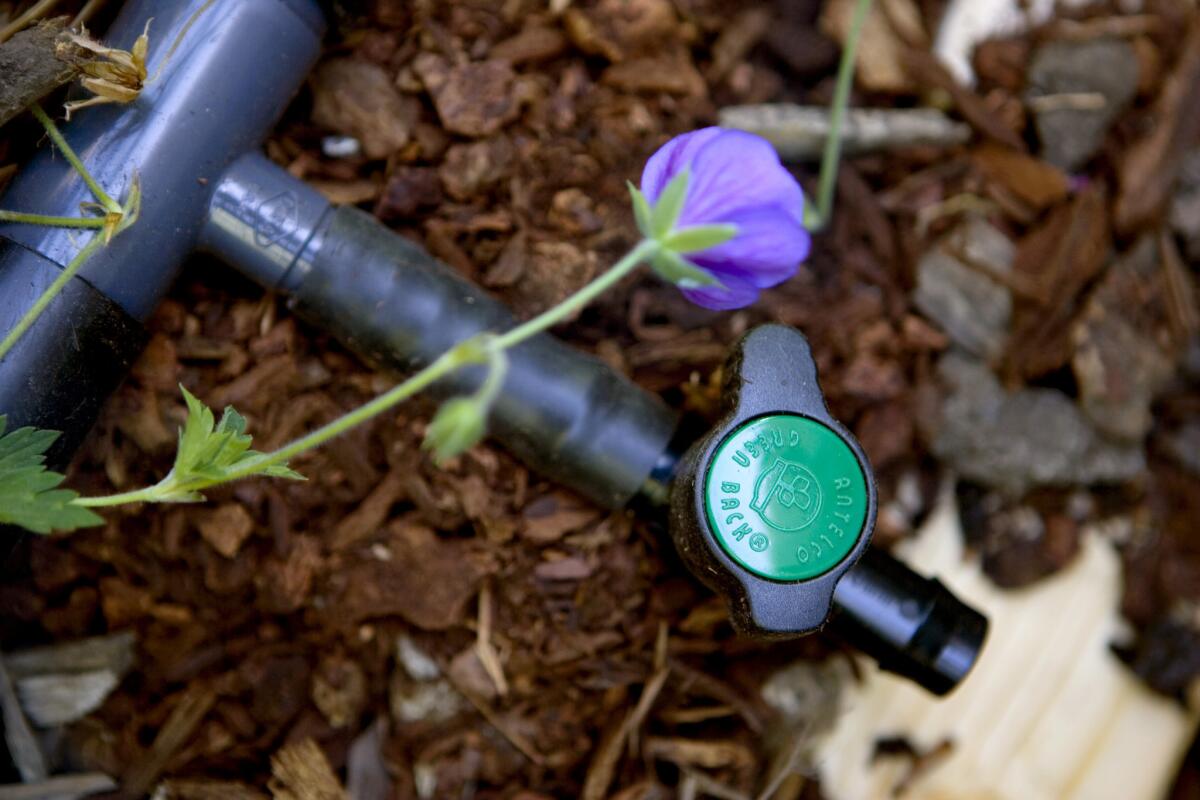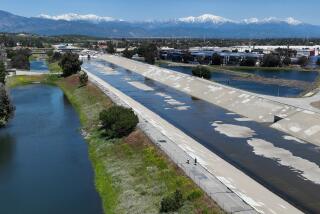L.A. pushes to use shower, bathwater to combat drought

One of many half-inch ball valves attached to a grey water system that diverts washing machine water away from the sewer and into rear yard landscape at a home in Berkeley.
Faced with a worsening drought, there is a new push to allow Los Angeles residents to better harness leftover water from daily showers, dish washing and laundry.
It’s part of a larger movement to use this grey water for home plant irrigation to conserve potable water.
What is grey water?
Grey water is almost as clean as potable water and can be used for a variety of water-intensive tasks, such as irrigating lawns and flushing toilets. Councilman Paul Krekorian’s motion released Tuesday asks the city to develop standards for gray water treatment systems that would allow wider use.
What do the rules now allow?
City regulations only allow use of grey water below ground, a Krekorian spokesman said.
Complete home grey water systems can collect up to 40 gallons of water per person per day, according to Krekorian’s motion. Los Angeles residents have used about 70 gallons of water per person per day in recent months, according to state data.
Krekorian’s motion also calls for city departments to recommend revisions to the Green Building Code that would require grey water systems for new construction and in any other “applicable circumstances.”
Q: Does grey water harm plants?
A 2012 study by the Water Environmental Research Foundation found many plants used for landscaping benefit from being watered with household grey water, The Times reported.
Although soil irrigated with grey water showed higher levels of surfactant cleaners, antimicrobials and sodium compared with areas irrigated with fresh water, the study found that the nitrogen present in grey water helped plant growth and could potentially reduce or eliminate the need for additional fertilizers.
Just three of the 22 plant species tested showed negative responses to grey water irrigation even after five years of exposure. Avocado, lemon and scotch pine trees responded poorly to salts present in some cleaners.
Q: Are there different types of grey water?
Yes. A UCLA report from 2009 says: “Graywater is typically wastewater low in turbidity, clear in color, and found from the drainage of bathtubs, showers, bathroom washbasins, clothes washing machines, and laundry tubs. Graywater quality is highly variable because it is source dependent given the variability in household water use. For example, water from clothes washers is high in phosphate content, whereas water from the shower has high turbidity and suspended solids. Residential graywater can be categorized as light graywater or heavy graywater.” That report also runs over potential human health issues from exposure.
Q: What are the risks?
The L.A. Department of Water and Power, in a grey water report, cited chemicals that could be contained in it. “When graywater is collected and used in accordance with the California Plumbing Code and when graywater reuse systems are designed, installed, and inspected by qualified professionals, then the risk is minimized, and graywater use is safe. Graywater use represents a potential risk. Graywater is not suitable for consumption. However, it is suitable for subsurface irrigation. Graywater must be handled properly, responsibly and without direct physical contact.”
Read the DWP’s full FAQ here.
More to Read
Start your day right
Sign up for Essential California for news, features and recommendations from the L.A. Times and beyond in your inbox six days a week.
You may occasionally receive promotional content from the Los Angeles Times.







